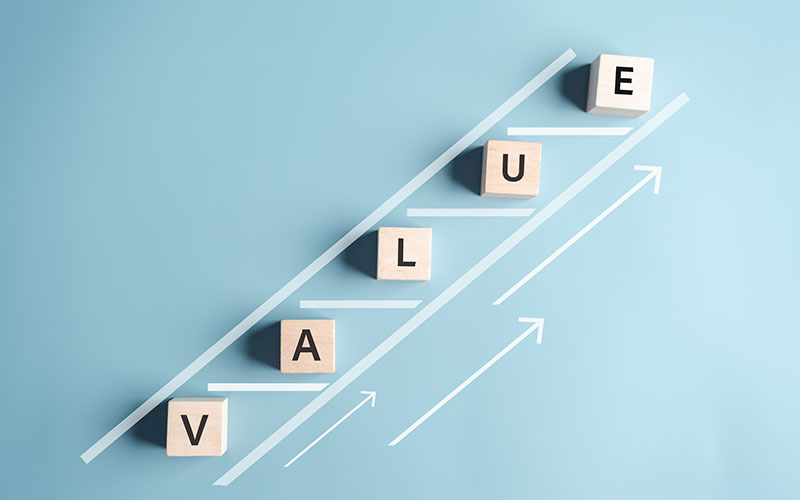
This content is for information and inspiration purposes only. It should not be taken as financial or investment advice. To receive personalised, regulated financial advice please consult us here at Elmfield Financial Planning in Padiham, Burnley, Lancashire.
Do you like the idea of selling something for more than you originally bought it? This is known as a “capital gain” and it is a great way to grow long-term wealth. However, there is often a government not too far away looking to tax it!
Whilst we all should pay our fair share to society, there is little sense in paying more in tax than is truly necessary. With some careful planning, you can keep more of your hard-earned gains – putting them to good use towards your financial goals.
Below, our Burnley financial planners explain how capital gains tax works in 2023-24. We include some ideas on how to navigate this prudently. Please get in touch for more information or to arrange a free consultation with one of our financial advisers.
How does capital gains tax work?
In the UK, capital gains tax (CGT) is levied when a “chargeable asset” (e.g. shares that you own) is sold at a profit.
CGT is paid by individuals and trusts. Companies are dealt with differently – paying corporation tax on their profits. In 2023-24, CGT is forecast to earn £17.8bn for the government in 2023-24.
Unlike income tax, which is often deducted automatically from a worker’s payslip, CGT must be manually reported and paid to HMRC. This is typically done using a Self Assessment Tax Return before the relevant deadlines.
For this reason, it is important to manage the sale of your assets carefully. Be careful not to quickly spend all of the profits you earn. Some of them may need to be set aside to settle your CGT bill by the end of the tax year.
CGT is levied at different rates according to your highest marginal rate of income tax. A basic rate taxpayer will pay less (10% or 20%) than a higher rate taxpayer (18% or 28%).
An individual can generate a certain amount of capital gains each tax year without facing CGT. This is known as the Annual Exempt Amount. Any unused allowance is lost when the new tax year starts on 6 April.
What has changed in 2023-24?
The present tax year (2023-24) is important for CGT because the tax-free threshold (the Annual Exempt Amount) has changed.
In previous years, an individual could earn up to £12,300 each tax year from capital gains without facing a tax bill. However, in 2023-24 this threshold has been lowered to £6,000.
The threshold is expected to fall even further to £3,000 per year in 2024. Therefore, 2023 is a good time for investors to think carefully about how to optimise the organisation of their assets.
How do I optimise my financial plan for capital gains?
Despite the reduction in the Annual Exempt Amount, there are still strategies that UK investors can use to mitigate needless tax erosion on their capital gains.
The first option is using an ISA. Any capital gains generated inside of an ISA are tax-free. Therefore, consider maximising your £20,000 annual ISA allowance if possible.
For instance, suppose you have £20,000 worth of shares in a general investment account. When shares inside this account are sold for a profit, the gains count towards your Annual Exempt Amount and may eventually lead to a CGT bill (if you cross the threshold).
One idea could be to generate, say, £6,000 worth of capital gains by selling certain shares in this account and then buying them immediately again inside of your ISA. This is known as the “bed and ISA” approach.
If the shares are sold again for a profit in the future, the gains will be tax-free due to their containment inside the ISA “wrapper”.
A second idea is to work with your spouse or civil partner to optimise your household tax bill. Remember, each person is entitled to his/her own ISA allowance and Annual Exempt Amount. Married partners and civil partners can also transfer assets between each other, without tax.
This opens up opportunities to maximise both of your allowances. For instance, suppose you have fully used your £20,000 ISA allowance for 2023-24 but your partner has not. By transferring certain non-ISA shares to them, they could then use the “bed and ISA” method to place the shares inside their own ISA (allowing for further tax-free growth in the future).
Another strategy is to consider spreading out your “asset disposals” (i.e. sales which generate capital gains) over multiple tax years. This can help you maximise your Annual Exempt Amount each year. However, bear in mind that this will become less effective from 2024 when the tax-free threshold is expected to fall to £3,000 per year.
Finally, consider managing your asset disposals wisely in light of your income. For instance, suppose two spouses have their own incomes, yet one person is a higher rate taxpayer and the other only pays the basic rate.
The latter person will, therefore, pay a lower rate of CGT on “chargeable assets”. Therefore, the couple might consider moving certain assets they wish to sell over to this person (e.g. if both individuals have fully used their ISA allowances and Annual Exempt Amounts).
Doing this (when guided by professional financial advice) can lower the overall CGT bill on the household since capital gains will be charged at the basic rate(s), not the higher rate(s).
Invitation
If you are interested in starting a conversation about your own financial plan or investments, then we’d love to hear from you.
Please contact us to arrange a free, no-commitment consultation with a member of our team here at Elmfield Financial Planning in Padiham, Burnley, Lancashire.
Reach us via:
T: 01282 772938
E: info@elmfieldfp.co.uk

